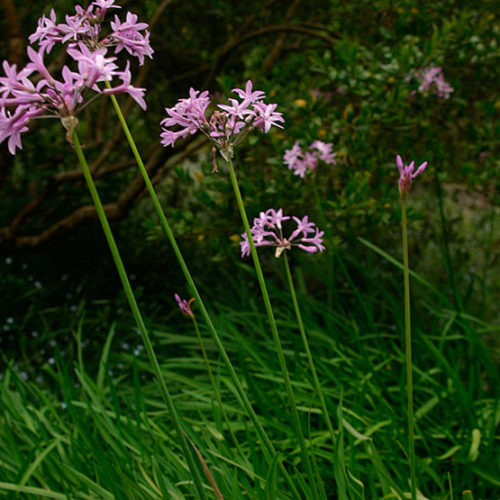Just how to Plant and Maintain Agapanthus in Your Yard
Just how to Plant and Maintain Agapanthus in Your Yard
Blog Article
Mastering the Art of Agapanthus Treatment: Vital Steps for Healthy Development and Vibrant Flowers
In the world of cultivation, the growing of agapanthus stands as a fulfilling venture for those who seek to support these classy flowering plants. With their striking blossoms and stylish vegetation, agapanthus has actually caught the attention of garden enthusiasts worldwide. Nonetheless, achieving optimum growth and vibrant blossoms needs a nuanced strategy that encompasses different vital steps. From choosing the best range to understanding pruning techniques, the journey towards growing thriving agapanthus plants is diverse and holds the vital to unlocking the complete capacity of these botanical gems.

Selecting the Right Agapanthus Variety

When picking the right Agapanthus selection for your garden, consider variables such as environment suitability, blossom shade, and development behavior. Additionally, think about the environment in your region to ensure the Agapanthus variety you pick can prosper in your certain problems. Understanding the development routine of various Agapanthus varieties is essential for correct positioning within your yard.
Suitable Growing Problems
Considering the optimal ecological demands is important for effective Agapanthus cultivation. Agapanthus plants are sensitive to chilly temperature levels and ought to be secured from frost throughout wintertime months.
To guarantee healthy and balanced growth and dynamic blossoms, plant Agapanthus light bulbs at a depth of regarding 2-4 inches and area them 8-12 inches apart. Adding raw material, such as garden compost, to the soil can improve water drainage and fertility, promoting robust origin growth. Mulching around the base of the plants assists maintain wetness and reduces weed growth. Normal watering is vital, particularly throughout the expanding period, to keep the dirt consistently moist but not saturated.
Watering and Feeding Tips
Preserving correct dampness degrees and offering essential nutrients are crucial elements in the treatment routine for Agapanthus plants. When it comes to sprinkling Agapanthus, it is crucial to strike an equilibrium. These plants prefer constantly moist dirt but are vulnerable to root rot if overwatered.
Feeding Agapanthus is essential for promoting healthy development and prolific blossoms. Use a balanced fertilizer, such as a 10-10-10 formula, in the very early springtime as brand-new growth emerges. Repeat this application every 6-8 weeks throughout the expanding season. Avoid excessive fertilizing, as it can explanation result in lush foliage at the cost of flowers. Constantly follow the maker's directions for proper dilution and application methods. By adhering to these watering and fertilizing pointers, you can ensure your Agapanthus plants prosper and generate vibrant, lasting flowers.
Pruning Methods for Agapanthus
Trimming Agapanthus plants at the proper times and with proper methods is important for keeping their health and promoting ideal development and blooming. The excellent time to prune Agapanthus is in late wintertime or early spring before brand-new growth arises. Beginning by getting rid of any kind of dead or yellowing leaves near the base of the plant. Cut them as short as possible without harming the emerging shoots.
For flowered stems, wait until the flowers have withered and afterwards cut them back to the base. This not only tidies up the plant's look yet YOURURL.com also motivates the advancement of new flower buds. Deadheading spent blossoms can likewise redirect the plant's energy into producing more blossoms rather than establishing seeds. However, if you want to gather seeds for propagation, leave some blossoms to completely dry and mature on the plant.
Keep in mind to utilize clean, sharp devices to make precise cuts and minimize the threat of presenting diseases. Agapanthus. Routine trimming will certainly aid keep your Agapanthus looking healthy and balanced and cool while ensuring an abundant display screen of gorgeous flowers
Managing Usual Bugs and Diseases
After ensuring appropriate pruning methods for Agapanthus, it is necessary to attend to usual pests and diseases that can affect the health and wellness and vitality of these plants. One common insect that anonymous impacts Agapanthus is the Agapanthus gall midge.
Furthermore, Agapanthus plants can experience from origin rot if they are planted in poorly draining pipes dirt. By being attentive and taking prompt action against diseases and parasites, you can aid your Agapanthus plants thrive and produce lively flowers. Agapanthus.

Verdict
Finally, grasping the art of agapanthus care includes choosing the right range, providing excellent growing problems, appropriate watering and fertilizing, appropriate trimming techniques, and addressing typical insects and illness. By following these crucial steps, you can make certain healthy and balanced development and dynamic flowers for your agapanthus plants. Remember to frequently keep track of and keep your plants to promote their total wellness and long life.
To make sure healthy and balanced development and dynamic blossoms, plant Agapanthus light bulbs at a depth of concerning 2-4 inches and space them 8-12 inches apart. By complying with these watering and fertilizing pointers, you can ensure your Agapanthus plants grow and create vivid, lasting blossoms.
One usual parasite that impacts Agapanthus is the Agapanthus gall midget. In addition, Agapanthus plants can endure from origin rot if they are grown in badly draining pipes dirt. By following these important actions, you can make certain healthy and balanced development and dynamic flowers for your agapanthus plants.
Report this page